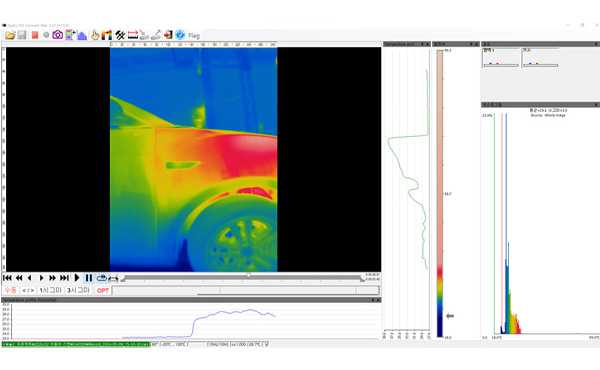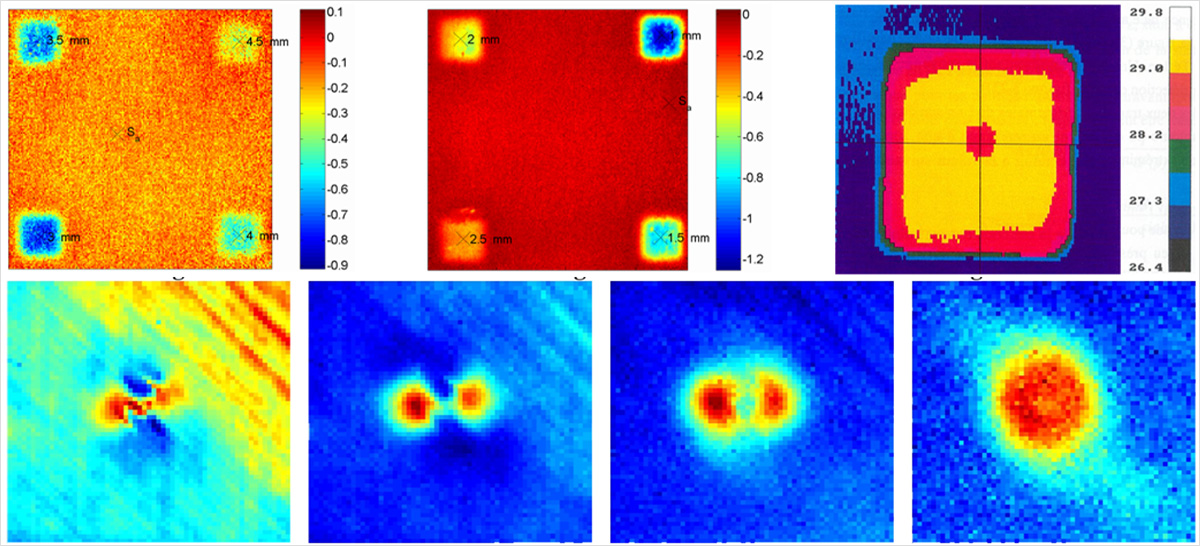PRODUCT
NDT

CAR SCAN
We use thermal imaging cameras to measure the thickness of a car's paint and use this to inspect the car's exterior.
Detailed information
This is a solution that determines a car's accident history by recognizing the thickness of the car's paint film using pulsed phase thermography
Pulsed thermography is carried out as depicted in Figure 1, i.e. after a thermal pulse ① is sent to the surface of the specimen②, thermal changes on the surface are recorded with an infrared camera③. Data is stored as large 3D matrices containing both spatial (x-y coordinates) and temporal (z coordinate) information④ , and processed⑤ (e.g. through the Fourier transform). Data is usually processed in two ways: (1) at the pixel level as 1D vectors through time; and/or (2) as 2D matrices (images or thermograms) at a particular time.




